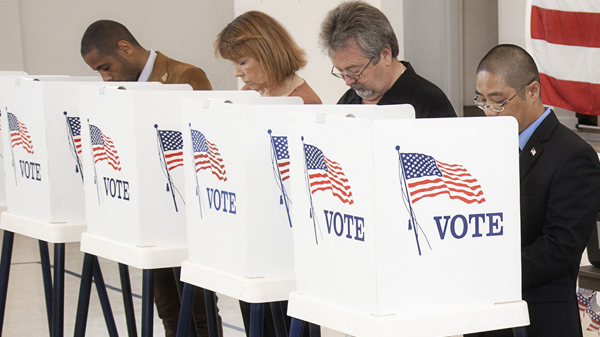Voters want lawmakers to focus on lowering costs in health care above all other issues in health care.
- Increasing health insurance options is a secondary concern and must be connected to lower costs to resonate with voters. Otherwise, voters will prioritize making insurance cover more services over increasing choices of insurance. This is critically relevant to the debate over Short Term Limited Duration Plans.
WHY IT MATTERS – Health care is an important issue to voters in America’s New Majority who are currently undecided or leaning toward voting for a Democrat candidate for Congress.
- Getting them to change their voting behavior will require having popular solutions to reduce health care costs.
HOW TO USE THIS DATA – The report lays out magnet language to describe New Majority health care solutions and believable wedge language to describe the opposition’s approach.
Click on the image below to read the full report, including charts with demographic breakdowns…or read the summary below.

All groups of voters prioritize cost reduction over reducing the number of uninsured.
- 69% of voters believe it is more important for lawmakers to focus on reducing the cost of care and coverage than reducing the number of uninsured Americans.
- This included 77% of Republicans, 63% of Democrats, and 68% of Independents.
- New Majority voters who are leaning toward voting for a Democrat for Congress have the strongest preference for focusing on reducing health care costs.
Voters also prioritize reducing the cost of treatment over reducing disease.
- 63% of voters believe it is more important for lawmakers to focus on reducing the cost of treatment for chronic diseases than reducing the number of Americans with chronic disease.
- There was little partisan or ethnic difference in response.
- New Majority voters matched all voters in their preference for focusing on reducing the cost of treatment.
- Older voters had the strongest preference toward lawmakers focusing on reducing the cost of treating chronic disease.
Voters also prioritize lowering the cost of health insurance over increasing the number of services covered by insurance.
- 69% of voters believe it is more important for lawmakers to focus on lowering the cost of health insurance over increasing the number of services covered by insurance.
- This includes majorities of Republicans (74%), Democrats (65%), and Independents (67%), as well as all ethnic and age groups.
- Gen Z (54%-39%) and Blacks (56%-34%) had the narrowest margin of preference for lowering the cost of insurance over increasing the number of services covered.
- All groups of voters in America’s New Majority preferred lawmakers focus on lowering the cost of insurance.
- (This data is from a July 27-30, 2023 poll. Toplines, Crosstabs)
Increasing choices in health insurance not a high priority.
- Voters prioritize increasing the number of health care services covered by insurance over increasing the number of health insurance options to choose from.
- This includes a plurality of Republicans (48%) and a majority of Democrats (65%) and Independents (56%).
- All voters in the New Majority preferred lawmakers to focus on increasing the number of services covered by health insurance over increasing the number of health insurance options from which to choose.
Republicans can gain substantially among key groups by focusing on health care solutions.
- By 57%-30%, voters prefer a Republican candidate with a health care plan focused on affordability, transparency, and reducing chronic disease through improved treatment and prevention over a Democrat candidate who wants to limit the sale of non-Obamacare insurance, enroll more people in taxpayer financed or government run insurance, and reduce Medicare spending on prescription drugs.
- Among all voters, this is a 10-point gain for the Republican candidate compared to the generic ballot, and a 21-point swing in favor of the GOP candidate.
- The largest gains come from Independents (+21), Blacks (+15), Asians (+14), and Gen X (+14).
- Among voters in America’s New Majority, this is an 8-point gain for the Republican candidate compared to the generic ballot.

